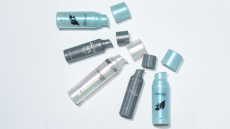What does Homeland Security want with the beauty industry? part 1

Cosmetics Design connected with the US Department of Homeland Security to learn about the program and in part 1 of this article covers the basics of CFATS.
The program exists because as Dave Wulf, infrastructure security compliance division director, tells Cosmetics Design, “chemicals continue to be a high-value target for terrorists to use in potential attacks.”
Wulf goes on to say that “this makes CFATS essential not only to reducing the risk associated with the misuse of these chemicals, but also to building a sustainable chemical security enterprise in the long run.”
Origin story
The Chemical Facility Anti-Terrorism Standards program got its start in 2007 when the US Congress gave Homeland Security authorization to supervise security at so-called high risk chemical facilities. Then seven years later Congress passed the Protecting and Securing Chemical Facilities from Terrorist Attacks Act of 2014. This expanded the department’s authority.
Concisely, CFATS “identifies and regulates high-risk chemical facilities in a wide array of industries including cosmetics to ensure they have security measures in place to reduce the risks associated with certain Chemicals of Interest,” according to a standardized statement the Department shared with Cosmetics Design.
“Risks,” the statement goes to explain, “include the possibility of theft, diversion, release or sabotage - in other words, the potential for a terrorist to cause a leak of toxic gas or an explosion on site, or to steal the materials and use them in a weapon or an attack offsite.”
Safer cosmetics
Homeland Security has compiled a list of chemicals of interest (COI), that list of 322 such chemicals is available as part of a document the program simply refers to as Appendix A. Some of the chemicals that appear on the list and are of particular importance to the personal care and beauty industry include triethanolamine, hydrogen peroxide, powdered aluminum, and isobutene.
But just because the program is quite regimented doesn’t mean it’s inflexible, Wulf tells Cosmetics Design. As he puts it, “the CFATS community is very diverse, ranging from chemical manufacturers and laboratories to cosmetics and personal care products [companies].”
“We understand every high-risk facility is unique in its own way, and there is no one-size-fits-all solution to chemical security,” says Wulf. “And CFATS, being non-prescriptive, allows us to work with facilities to find the best security solutions that fulfill the requirements under the program.”
By way of illustration the Department shared this brief case study with Cosmetics Design:
“One well-known cosmetics company utilized hydrogen peroxide in its processes. After filing a Top-Screen with the CFATS program, the facility was notified that it was a Tier 4 high-risk chemical facility. [Tier 4 is the lowest possible level of “high-risk chemical facilities regulated by CFATS.] During the inspection, the Chemical Security Inspectors helped the company to realize the dangers of the hydrogen peroxide and how this chemical could be used to carry out a terrorist attack.
“As a result, the facility created a new chemical cage with limited access, an inventory management program, and installed a camera system to monitor the chemicals. In addition, the team helped the facility identify other methods to bolster their security posture such as meeting with their local Sheriff’s department on a regular basis and conducting “See Something, Say Something” training through DHS.”
Find out more about CFATS in part 2 of this article tomorrow on Cosmetics Design.
















